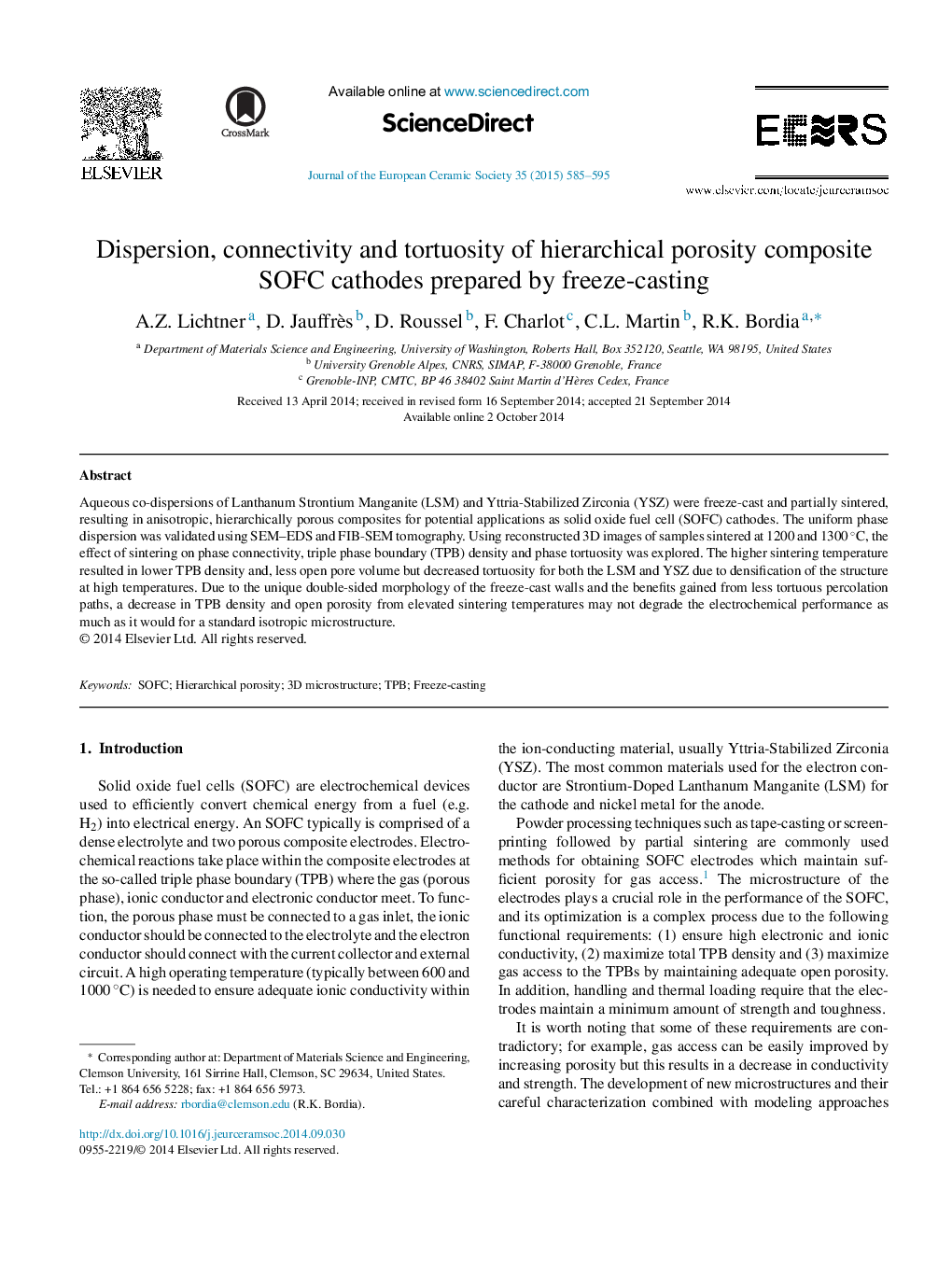| Article ID | Journal | Published Year | Pages | File Type |
|---|---|---|---|---|
| 1474630 | Journal of the European Ceramic Society | 2015 | 11 Pages |
Aqueous co-dispersions of Lanthanum Strontium Manganite (LSM) and Yttria-Stabilized Zirconia (YSZ) were freeze-cast and partially sintered, resulting in anisotropic, hierarchically porous composites for potential applications as solid oxide fuel cell (SOFC) cathodes. The uniform phase dispersion was validated using SEM–EDS and FIB-SEM tomography. Using reconstructed 3D images of samples sintered at 1200 and 1300 °C, the effect of sintering on phase connectivity, triple phase boundary (TPB) density and phase tortuosity was explored. The higher sintering temperature resulted in lower TPB density and, less open pore volume but decreased tortuosity for both the LSM and YSZ due to densification of the structure at high temperatures. Due to the unique double-sided morphology of the freeze-cast walls and the benefits gained from less tortuous percolation paths, a decrease in TPB density and open porosity from elevated sintering temperatures may not degrade the electrochemical performance as much as it would for a standard isotropic microstructure.
